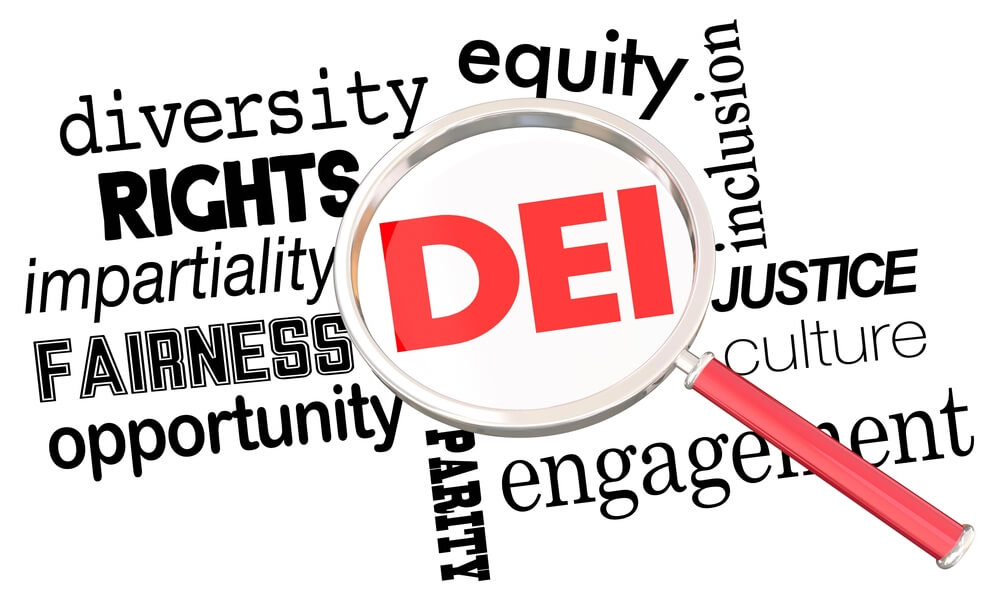Recent studies demonstrate the existence of a direct link between a workforce's diversity and the level of employee engagement of that business's workforce members. One such study found a statistically significant link among diversity, trust, and employee engagement for all employees, not just underrepresented groups.
In addition, the study demonstrated that improved employee engagement directly correlates with improved employee productivity, which contributes to an employer's profit margin. In fact, increasing employee engagement by 10% may increase profits per employee by $2,400 per year.
However, other workplace factors also impact the strength of employee engagement. One of the most important factors influencing employee engagement levels is inclusivity.
Diversity vs. Inclusivity
People tend to conflate diversity with inclusivity; however, they are not the same thing. The Housing and Urban Development (HUD) agency defines diversity and inclusion as follows:
"Diversity encompasses the range of similarities and differences each individual brings to the workplace, including but not limited to national origin, language, race, color, disability, ethnicity, gender, age, religion, sexual orientation, gender identity, socioeconomic status, veteran status, and family structures.
"Inclusion is a state of being valued, respected and supported. It's about focusing on the needs of every individual and ensuring the right conditions are in place for each person to achieve his or her full potential."
Shirley Davis Sheppard, Vice President of diversity and inclusion and workplace flexibility at the Society for Human Resource Management (SHRM) defined inclusion this way.
"Inclusion is the ability to engage diversity in your workforce, so everyone has equal opportunities to contribute."
Dr. Sheppard explained that employers may foster diversity in their workforce without having inclusion. Organizations that allow employees to play to their individual strengths instead of grouping them into assigned categories become inclusive workplaces. Inclusive workplaces allow employees to cultivate, evolve, and apply their respective talents.

Factors Mediating Diversity and Engagement
Other factors impact diversity and employee engagement in the workplace as described below. A Deloitte study demonstrated that employee trust and inclusion must exist if an employer's diversity programs is to result in increased employee engagement.
Climate of Trust
An employer's diversity programs should engender a climate of trust in the workplace by showing employees they are valued and appreciated. Trust also develops when employees are encouraged to contribute ideas to their work goals and have a stake in decisions made that affect their work.
Employee Involvement
Employees want their employers to involve them in their workplace Diversity, Equity, and Inclusivity (DEI) initiatives. Employers can do this easily by providing employee feedback mechanisms. They can also allow employee-lead initiatives to help build a sense of ownership and investment in their work. Even so, only 25% of companies have an employee engagement program.
Communication
Like many workplace ideas, dialogue between management and employees keeps communication channels open. Employers learn perspectives shared by their employees and employees learn management's future goals and tactics. Employers should encourage employees to participate in open dialogues.
Companies that adopt regular employee feedback have turnover rates that are 14.9% lower than companies without regular feedback opportunities.
It is critical that, as an employer, you periodically communicate your dedication to diversity and inclusivity. If you do not communicate your continued resolve, your employees may not know about your efforts. Employee knowledge of your efforts toward diversity and inclusivity directly correlates to your employee's engagement level.
Organizational Structure
An organization that values diversity and inclusion in its culture can create a more engaged workforce. The organization creates the support system that underpins the personal and professional growth of all its employees. Examples of the support system means promoting diversity and inclusion in:
- Recruiting,
- Training,
- Leadership development,
- Throughout the employee lifecycle.
Today's employees look for three things in a workforce that encourages higher levels of employee participation. They want:
- Autonomy in the workplace;
- To learn new things at their jobs, especially things that matter.
- Their working life to do something in service to a greater cause.
These 21st century ideas are especially important to the Gen Z who want their employment to provide professional development opportunities, collaboration, and promote a purposeful life. Their loyalty factor is mercurial so providing the things they look for in their work-life like inclusivity is critical to keeping valued employees.

Do You Need an HR Intervention?
If you recognize that your employment engagement component is lagging, you may consider partnering with an HR outsourcing service. A full-service HR outsourcing partner provides professional guidance on how you can create sustainable employee engagement. That may be through DEI initiatives, employee recognition programs, and countless other options that best-in-class HR outsourcing partners have to offer.



